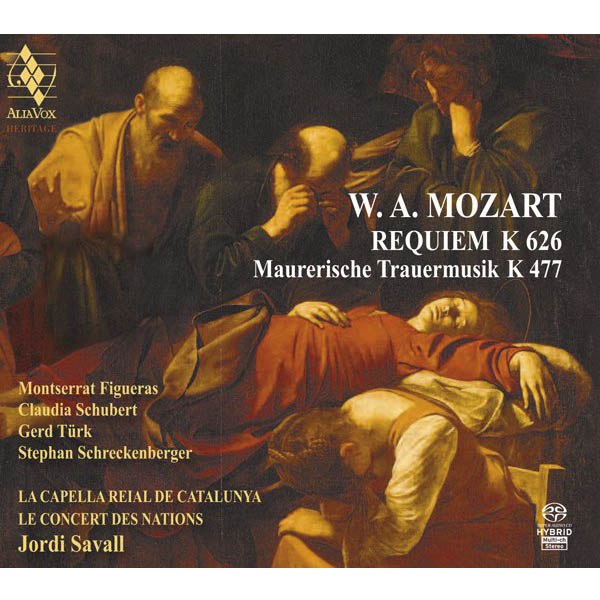W.A. MOZART
Requiem K 626
15,99€
Out of stock
Reference: AVSA9880
- La Capella Reial de Catalunya
- Le Concert des Nations
- Jordi Savall
Mozart’s Requiem, notwithstanding the fragmentary form in which it has come down to us (and despite the fact that it was completed alter his death by Franz Xaver Süssmayr with some additions by Joseph Eybler) wholly bears the stamp of its creator’s genius. His conception is perceptible through the general structure of the work, and that irrespective, even, of the difference in character or quality of the parts that were completed later.
Mozart’s Requiem, notwithstanding the fragmentary form in which it has come down to us (and despite the fact that it was completed alter his death by Franz Xaver Süssmayr with some additions by Joseph Eybler) wholly bears the stamp of its creator’s genius. His conception is perceptible through the general structure of the work, and that irrespective, even, of the difference in character or quality of the parts that were completed later.
It is highly unlikely that a second-rate composer such as Süssmayr, who had never written anything worthy of note, would have been capable of finishing the Lacrimosa and composing the Sanctus, the Benedictus and the Agnus Dei entirely on his own. However, we shall never know what access Süssmayr had to the rough drafts, or whether he heard Mozart himself playthem – which would have enabled him to memorise them to a large extent.
+ information in the CD booklet
JORDI SAVALL
Translation: Mary Pardoe







Share